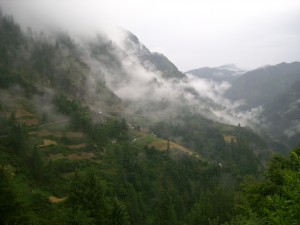On March 11th, 2011, a magnitude 8.9 earthquake hit the coast of Japan, triggering a devastating tsunami that has since destroyed the northeastern part of the island nation. Entire towns have been swept away, leaving thousands dead or missing and countless others left in danger. The crisis in Japan continues as nuclear reactors at Japan’s Fukushima Daiichi Nuclear Power Station explode.
Our hearts go out to the people of Japan and all those affected by this tragedy.
Ways to Support Japan Relief Efforts:
- Give to the Red Cross by texting REDCROSS 90999 and a $10 donation will be made.
- Give to the Northern Japan Earthquake Relief Fund.
- For a list of ways in which you can help, please visit the COLORLINES website.
—
What important lessons can we learn now from this current nuclear disaster? In recent months, dialogue in the United States has favored nuclear power in the renewable energy debate, but if the growing crisis in Japan teaches us anything, it shows us the many risks associated with nuclear power.
The following ten points are adapted from Green Festival Reader by Kevin Danaher and Alisa Gravitz.
Ten Reasons to Oppose Nuclear Power
1. Accidents: As the situation in Japan demonstrates, natural events (e.g., earthquakes, tsunamis, hurricanes, tornadoes), which we have no control over, can create havoc due to the instability and toxic content of nuclear power plants.
2. Terrorism: Nuclear power plants are prime targets for terrorist organizations. Imagine if the hijacked planes on 9-11-2001 had crashed into nuclear power plants. The devastation would have been far worse than what actually happened and large areas of the eastern United States would be uninhabitable for decades, if not centuries.
3. Nuclear waste: Waste from nuclear power plants will be toxic for more than 100,000 years. The human race does not even have a language that has lasted that long, so how can we store those toxic wastes in a way that will be safe for that long, plus write messaging that will warn people away from those storage sites?
4. Proliferation: The U.S. government and U.S. companies have been complicit in allowing nuclear technology to spread to many parts of the world. The fissionable material used in power plants can be spread in ways that jeopardize people, property and the planet.
5. Costs: The costs of building nuclear power plants have skyrocketed over the years. What killed nuclear power in the United States was capitalism: it is simply not profitable without massive corporate welfare from the government. While solar, wind and other less dangerous forms of energy have been getting less expensive over the years, the cost of nuclear power keeps going up.
6. Corporate welfare: Private investors have not been willing to finance the construction of nuclear power plants. Nuclear power would not even exist were it not for billions of dollars of welfare payments from the federal government. The same politicians who oppose welfare for the poor and sick seem to have no problem shoveling our tax money into the coffers of powerful energy companies to support dangerous nuclear power plants.
7. Environmental impact: The most important natural resource we have is water, and it is being poisoned and depleted at an increasing rate. Nuclear power uses more water than any other form of power generation: nuclear power takes 40,000 gallons per megawatt whereas wind energy uses just 2,000 gallons. This resource cost will increase as the supply of clean water steadily declines and population increases.
8. Not enough sites: Nuclear power plants must be located near large supplies of water, so drought (a more common occurrence with climate change) can reduce their productivity or shut them down.
9. Not enough “clean” uranium: Uranium mining in the U.S. southwest is notorious for its damaging impact on Native American nations and the workers who mine the uranium. Plus, the recoverable supply of worldwide uranium—nuclear power’s fuel—is dwindling. Scientists have shown that if we tried to generate all of the world’s electricity with nuclear power, we would run out of uranium in ten years.
10. Not enough time: We must find less-polluting energy sources during the next decade if we want to avoid catastrophic climate chaos. Whereas distributed renewables (wind and solar) can be built quickly, nuclear power plants are notorious for taking long periods of time to finance and build.
—
Once again, to support relief efforts in Japan:
- Give to the Red Cross by texting REDCROSS 90999 and a $10 donation will be made.
- Give to the Northern Japan Earthquake Relief Fund.
- For a list of ways in which you can help, please visit the COLORLINES website.
If you know of other organizations not listed here that are doing great work to support relief efforts in Japan, please feel free to share links and information about them in the Comments section. Thank you.
 Nepal is now recovering and regaining its footing after two major earthquakes shook the region this spring. More than 9,000 people lost their lives and hundreds of thousands of people were made homeless, with entire villages flattened across many districts of the country. Government data estimates 200,552 homes to be completely destroyed and 186,285 homes to have been partially damaged. Additionally, much tourism has been canceled, which has further hurt local economies.
Nepal is now recovering and regaining its footing after two major earthquakes shook the region this spring. More than 9,000 people lost their lives and hundreds of thousands of people were made homeless, with entire villages flattened across many districts of the country. Government data estimates 200,552 homes to be completely destroyed and 186,285 homes to have been partially damaged. Additionally, much tourism has been canceled, which has further hurt local economies.